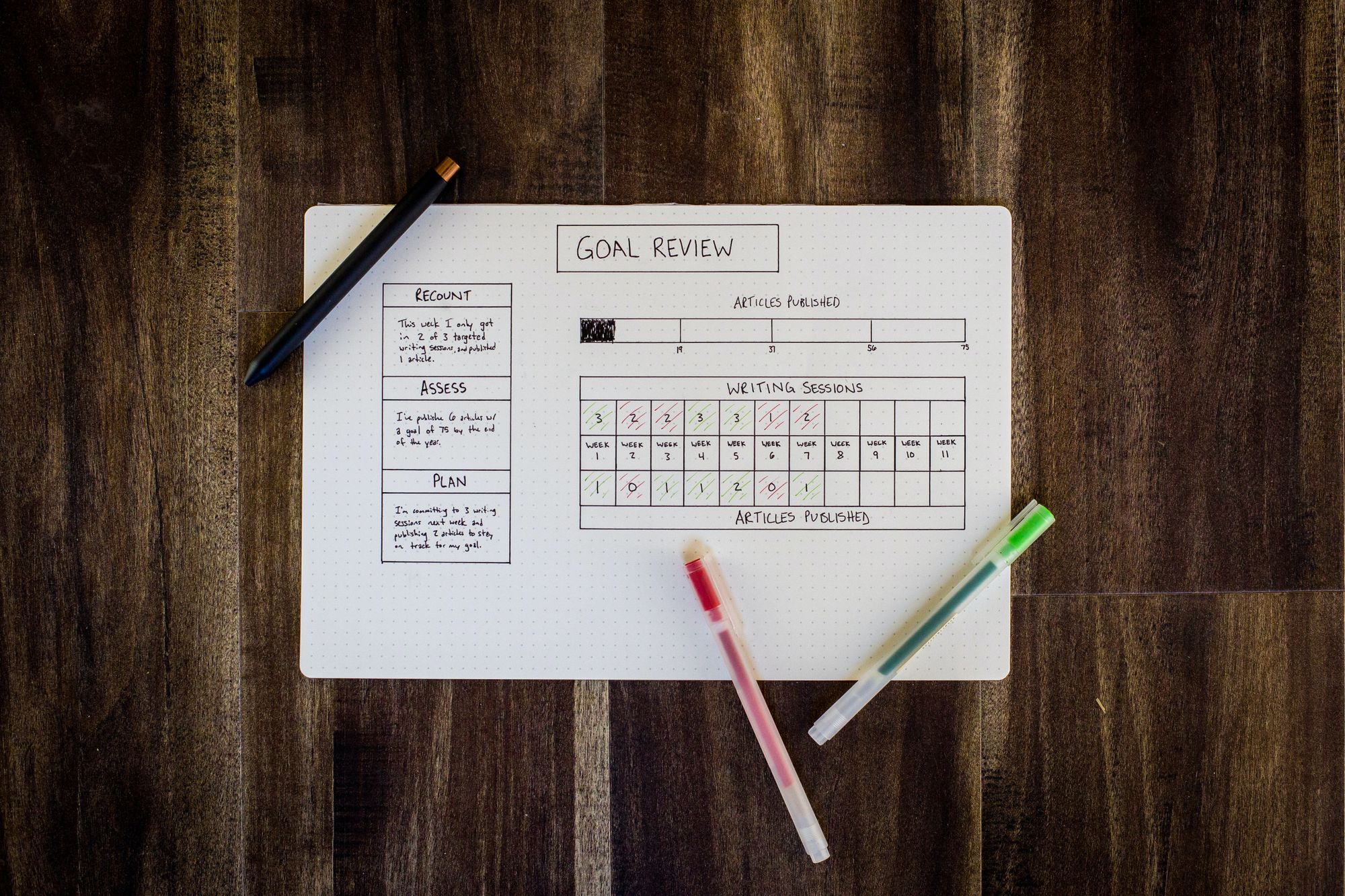There are roughly a gazillion (we counted) different types of planners, calendars, diaries, apps, and tools out there to help you get organized. But it turns out that whatever tool you choose, it only works if you use it.
Despite what productivity gurus and Instagram influencers might want us to believe, organization is a habit — not a particular tool or software package even. And sometimes overly complicated systems can actually get in the way of building a habit of organization and productivity.
That may be why the Bullet Journal method, created by Ryder Caroll, has enjoyed such a swell of popularity over the past few years. All you need to implement it is a notebook and a pen and, done properly, it eliminates many of the barriers to an habit of organization that other tools might create.
Recently, Bryan Barajas, marketing director of PreCheck, spoke about the magic of Bullet Journaling at the Managing Editor Live conference, which Showcase Workshop sponsored.
The science philosophy of Bullet Journaling
Apart from being a way to stay organized and record your thoughts, Bullet Journaling is backed by science and a strong philosophical blueprint.
First, the act of writing with a pen (or pencil, as your author prefers): studies have shown that elementary school students perform better when they write essays by hand, and college students retain more information from a lecture when they take notes by hand rather than typing on a computer. This correlation is even stronger for people who are kinesthetic learners.
Barajas said, “There's also a phenomenon called the Zeigarnik effect. It was discovered in 1927 by a Lithuanian psychologist. Basically, they observed how waiters remembered incomplete orders better than those that were completed because they were written down and they knew that they were incomplete.” That’s why the analog Bullet Journal may be better for helping keep you organized and remembering things than digital organizational tools.

Second, there’s a strong element of mindfulness and intentionality behind the Bullet Journal method. When done properly, Bullet Journalers record all the events of their day — from the most important to the most mundane. The act of pausing to recall and record what has happened is a powerful mindfulness tool.
Barajas said:
Another of the key components of the Bullet Journal is introspection. Just having that internal dialogue with yourself, [...] just spending that time reflecting daily. Carroll recommends splitting the daily reflection into two components.
In the morning, you can start your day just by gathering your thoughts, putting together... The idea here is to clear your mind, unburden yourself so that you can attack the day and get the work done that needs to be done, whether it's personally or professionally.
The evening, it's also about unburdening your mind, looking at what you accomplished, celebrating what you did accomplish. But also, getting ready for a night of rest.
How to Bullet Journal
As we mentioned above, all you need to start Bullet Journaling is a notebook and your favorite writing instrument.
The method is to create entries with rapid logging; rather than long, complete sentences and paragraphs, Bullet Journals rely on short sentences or phrases in a bulleted list.
The bullets themselves are different symbols used to visually categorize each entry. The basic symbols include:
• for tasks
- for notes
○ for events
X for a completed task
> for a postponed task
< for a task scheduled for the future
You can also include signifiers to help emphasize and call out certain entries, including:
* for priority tasks
! for inspiration
Each entry in the Bullet Journal starts with a line for the topic that describes the page’s purpose, usually the date of the entry. From there, you simply log thoughts, tasks, events, and whatever else happens during your day.
The rapid logging entries are at the heart of the Bullet Journal system, but there are a few other pages you might want to add. You could add a page for the current month that lists already scheduled events, or a similar page for the current week. Carroll suggests including an index so that you can rapidly find important information later.
Depending on your work, life, and hobbies, you can also create pages for things you want to personally track. This could include projects, a food or exercise log, a habits tracker, a reading log, a list of films you want to see, or a list of gifts to buy or cards to send.

This customization is what makes a Bullet Journal so powerful, unlike a pre-printed planner or app which may have sections you don’t need or lack specific areas for things you want to plan or track. You can adjust the pages of your Bullet Journal to include (or exclude) anything you wish, customizing it to your exact tastes, needs, and personality.
Avoid these pitfalls with Bullet Journaling
Ready to start your Bullet Journal? Bryan also pointed out a few potential setbacks you might encounter when you first start:
- Sacrificing clarity for brevity. Because the system relies on short notes for rapid logging, you have to be careful that you’re not sacrificing clarity for brevity. Remember, the hope is that if you need this information again in three months or three years, you’ll be able to find it — and understand it.
- Overcomplicating the system. Bryan says, “Don't get too crazy, making too many custom bullets. You don't have to make it too complicated; keep it simple. Keep it to a minimum if you can. It will just be more efficient and effective.”
- Design over function. If you search the web for examples of Bullet Journal spreads, you’ll find hundreds of examples of beautifully designed pages — but spending too much time and energy on making it pretty can work against you.
- Creating too far in advance. Barajas found that he would spend hours creating spreads for the next two months or so, but then if something wasn’t working, he was locked in. The power of the blank page was gone.
- Wrong size notebook. Because you want to carry your Bullet Journal with you pretty much everywhere, size does matter!
- Not making time for planning. Organization is a habit, and so is Bullet Journaling. Setting aside even five minutes a day to catch up on your Bullet Journal, and 10 - 15 minutes at the end of the week to review and plan ahead, can make a huge difference.
The key to getting started, according to Bryan, is not being intimidated about getting started. “No one is going to judge your journal. No one is going to see your journal about yourself, unless you want to share it with everyone else. So don't be intimidated about what you see on Instagram. You don't have to make it look pretty. It can be very minimalistic and it can still be just as effective. So again, just take that risk and get started. The beauty of the blank page is that you can always change.”
The information in this post came mostly from Bryan's session at the Managing Editor Live conference in October 2020.
Header image by Hannah Olinger on Unsplash.